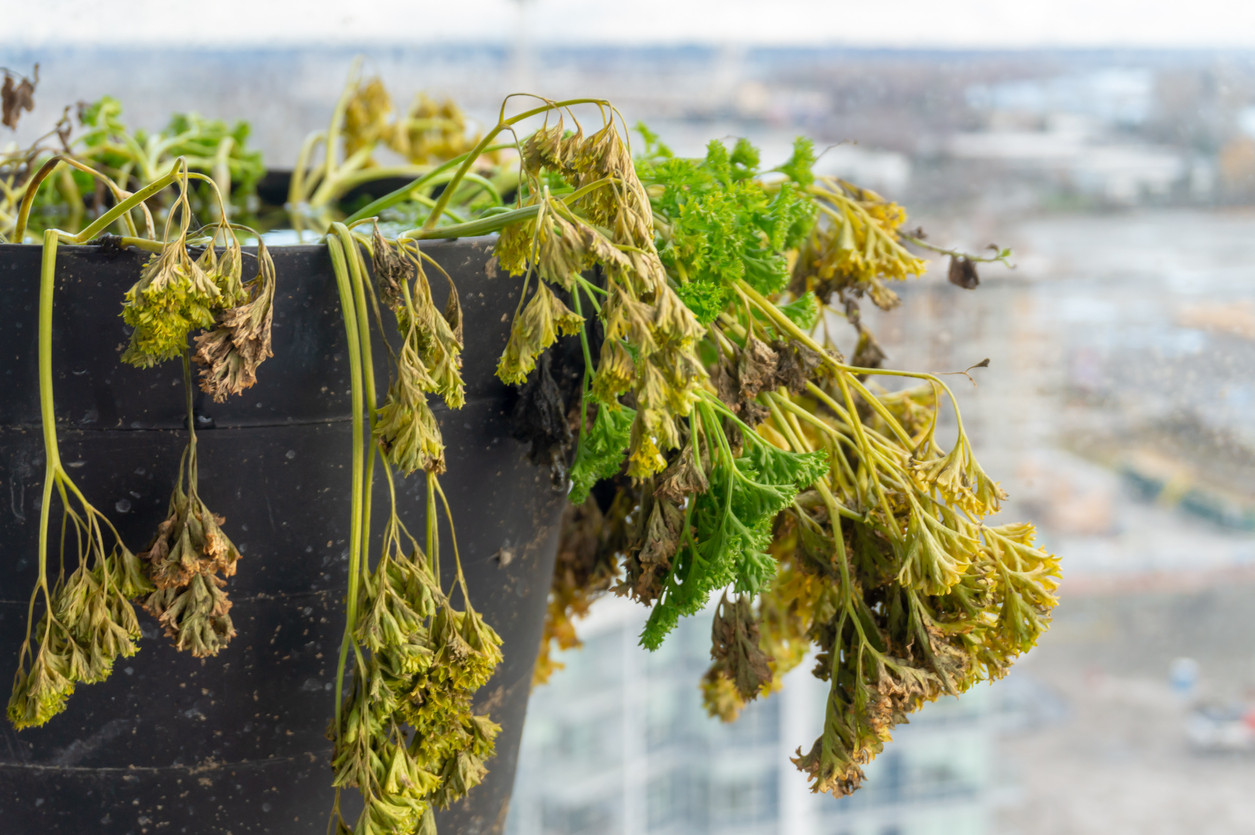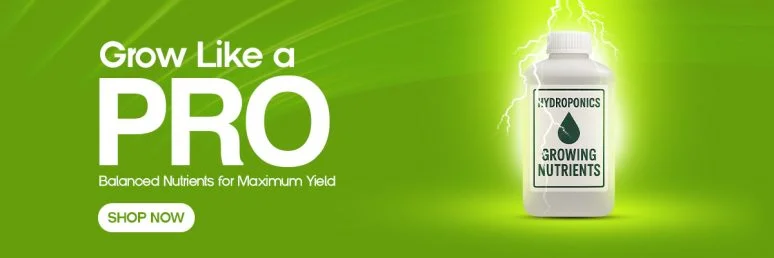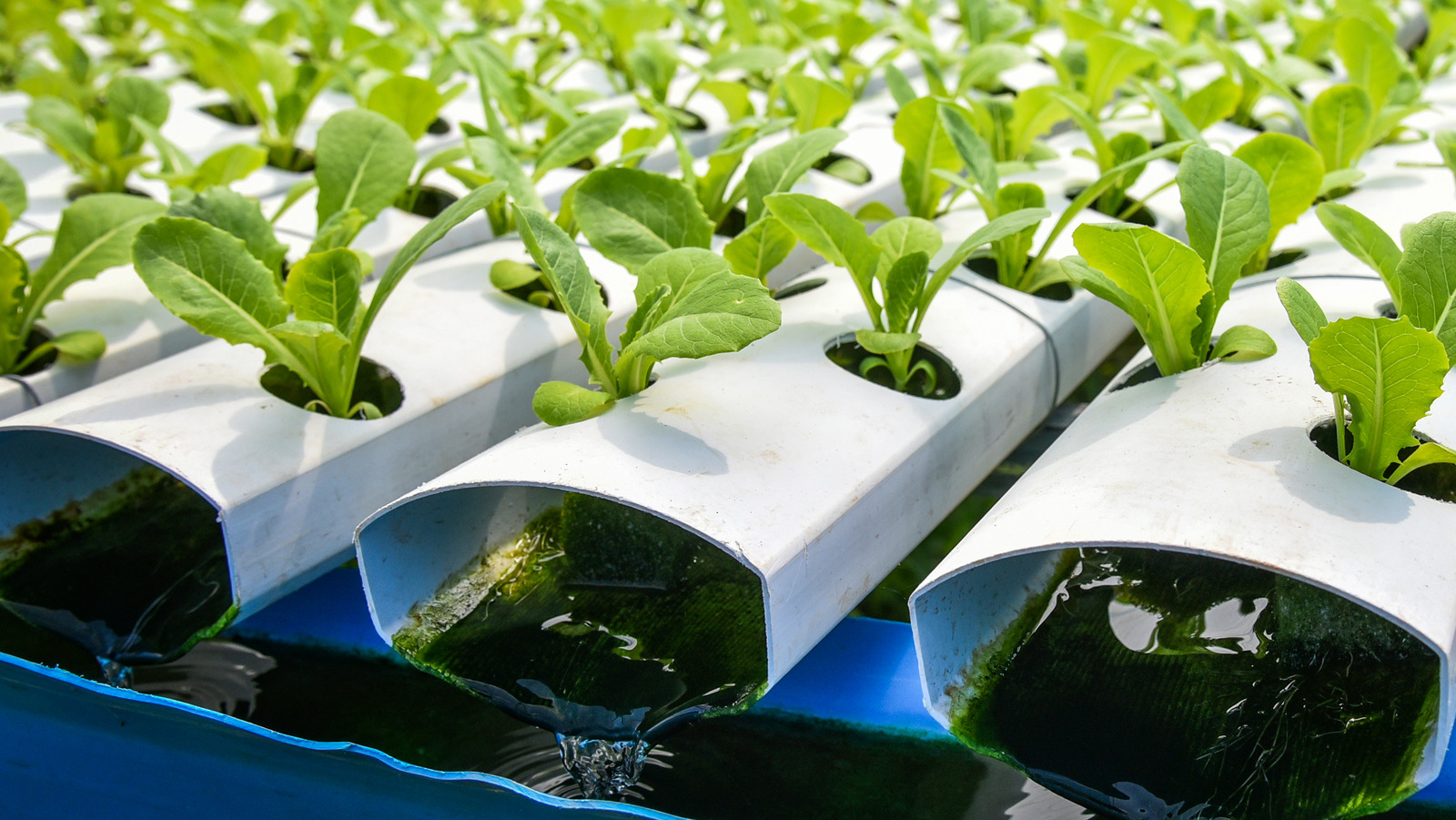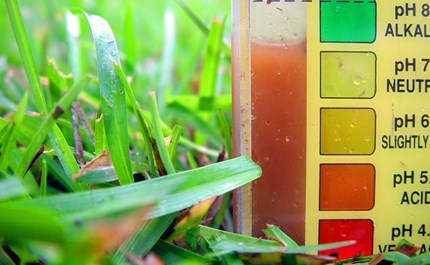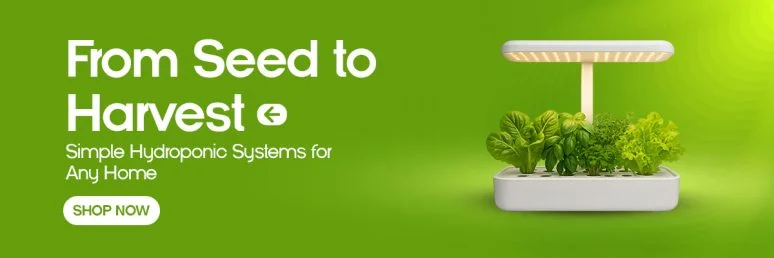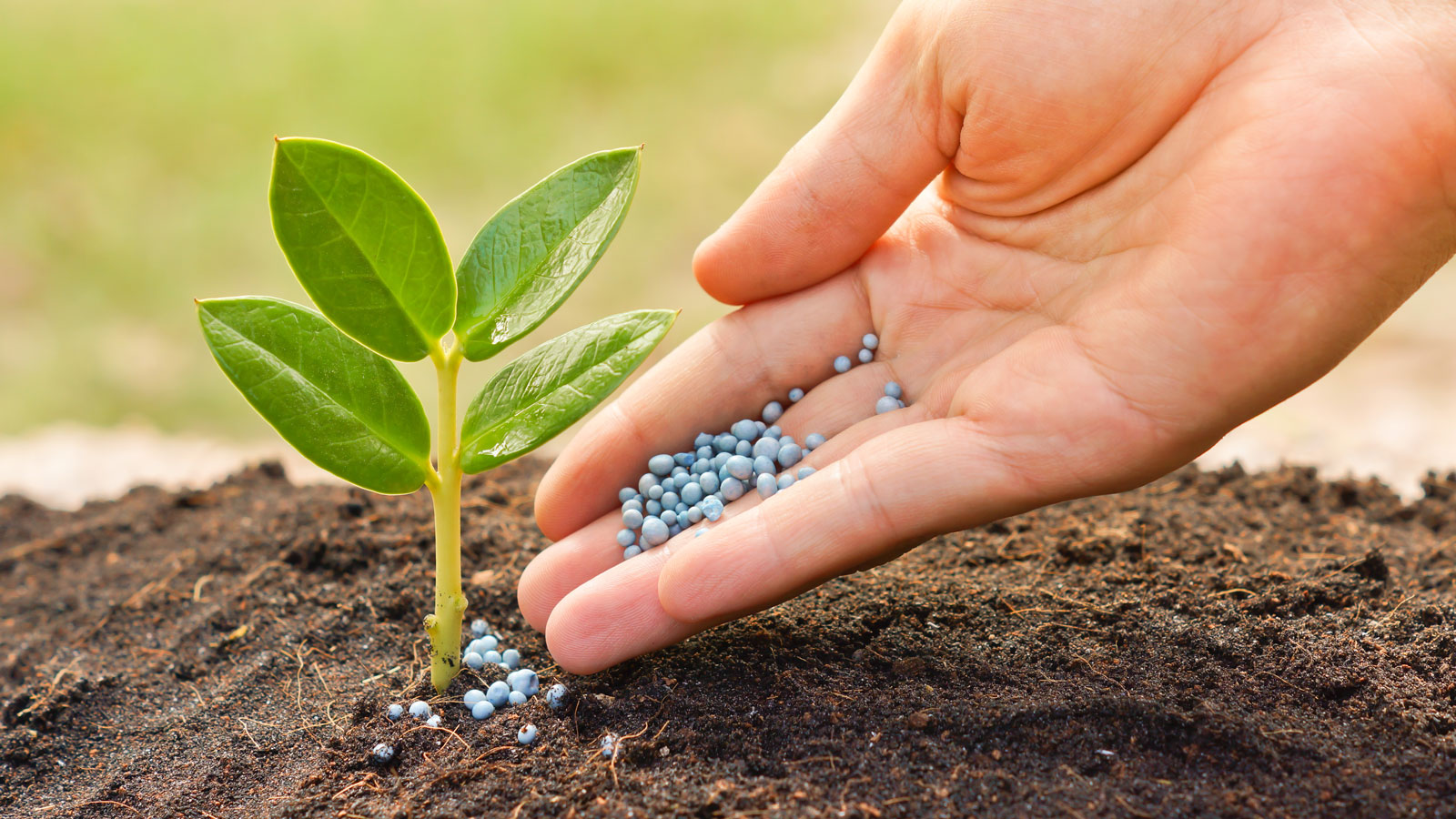Hydroponic Plants Nutrient Requirements: Feeding Tips for Healthy Growth

Key Takeaways for Growing Healthy Hydroponic Plants
- Hydroponic systems require precise nutrient solutions with balanced macro and micronutrients to replace what soil would naturally provide.
- pH levels between 5.5-6.5 are critical for proper nutrient absorption, with monitoring needed at least twice weekly.
- Different growth stages demand adjusted nutrient formulations – seedlings need less concentration while flowering plants require more phosphorus and potassium.
- Visual plant symptoms like yellowing leaves or stunted growth provide early warning signs of specific nutrient deficiencies.
- Maintaining proper EC/PPM measurements prevents both nutrient burn and deficiency, with measurements varying by plant type and growth stage.
Why Your Hydroponic Plants Are Struggling (And How to Fix It)
“Hydroponic Plants Could be Dying …” from www.hydroponicgenerations.com.au and used with no modifications.
Growing plants without soil seems like magic until things go wrong. In hydroponics, your plants depend entirely on you for their nutritional needs, making proper feeding the difference between stunning success and disappointing failure. When your hydroponic garden struggles, nutrient imbalance is often the culprit – but identifying and fixing the specific problem requires understanding the fundamental principles of plant nutrition in water-based systems.
The Nutrient Gap: Soil vs. Soilless Growing
Soil naturally provides plants with essential nutrients through organic matter decomposition and mineral content. In hydroponics, this natural buffering system is absent, requiring gardeners to supply the complete nutritional profile plants need through carefully formulated solutions. While soil can store nutrients and slowly release them, hydroponic systems deliver nutrients directly to roots, creating a more efficient but less forgiving growing environment. This direct delivery means faster growth but also faster development of deficiencies when things go wrong. The advantage comes with significantly accelerated growth rates – hydroponic plants typically grow 30-50% faster than soil-grown counterparts when properly fed.
Understanding this fundamental difference between soil and hydroponic growing is essential for success with Nutraponics hydroponic systems, which are designed to maximize this direct nutrient delivery advantage. Without soil’s natural reserves and buffering capacity, your nutrient solution becomes the lifeline for your plants, making proper formulation and maintenance absolutely critical.
Signs Your Plants Are Nutrient-Starved
Plant leaves tell stories about their nutritional status through color, texture, and growth patterns. Yellowing lower leaves often signal nitrogen deficiency, while purple stems and leaf undersides typically indicate phosphorus issues. Browning leaf edges point to potassium problems, and new growth with yellowing between veins suggests iron or magnesium shortages. These visual symptoms appear in specific patterns that help identify exactly which nutrient is lacking. The location of symptoms matters too – deficiencies of mobile nutrients like nitrogen appear first in older leaves as plants relocate nutrients to new growth, while immobile nutrient issues like calcium show up in newer leaves first.
Common Mistakes That Lead to Poor Plant Health
The most frequent hydroponic feeding error is using the same nutrient solution throughout the entire growing cycle. Plants have dramatically different nutritional needs during vegetative growth versus flowering and fruiting. Another common mistake is failing to adjust solution strength based on environmental conditions – plants use less nutrients in cooler temperatures or lower light conditions. Neglecting to flush systems periodically allows salt buildup that locks out certain nutrients. Perhaps the most overlooked factor is water quality – starting with poor quality water containing high mineral content can throw off your carefully measured nutrient balance before you even begin. Regular testing and adjustments are essential maintenance tasks that cannot be skipped in successful hydroponic gardening.
Essential Macronutrients Your Plants Can’t Live Without
“Macronutrients in plants: Types …” from housing.com and used with no modifications.
Macronutrients form the foundation of plant nutrition, needed in relatively large quantities compared to micronutrients. These primary building blocks include nitrogen (N), phosphorus (P), potassium (K), calcium (Ca), magnesium (Mg), and sulfur (S). Each plays multiple critical roles in plant development, from protein synthesis to energy transfer. Understanding how these nutrients work together and recognizing when one is out of balance will dramatically improve your hydroponic results.
Nitrogen: The Growth Engine for Leafy Greens
Nitrogen drives vegetative growth, forming the backbone of amino acids, proteins, chlorophyll, and genetic material. It’s the element responsible for lush, green foliage and rapid growth, particularly important for leafy crops like lettuce, spinach, and kale. Plants suffering from nitrogen deficiency first show yellowing in older leaves as the plant redirects this mobile nutrient to support new growth. Excess nitrogen produces overly lush, soft growth that’s susceptible to pests and disease while delaying flowering and fruiting.
Leafy green production requires higher nitrogen levels throughout the growing cycle, typically 150-200 ppm, while fruiting plants need this higher nitrogen only during early vegetative stages. When growing leafy greens hydroponically, maintaining consistent nitrogen levels prevents the bitter taste that can develop when plants experience deficiency, even briefly. The nitrogen form matters too – nitrate nitrogen produces compact growth while ammonium nitrogen promotes faster but sometimes softer development.
Phosphorus: Building Strong Roots and Flowers
Phosphorus plays a crucial role in energy transfer, root development, and reproductive growth. This essential nutrient powers the biochemical reactions that drive photosynthesis through ATP (adenosine triphosphate) molecules. In hydroponic systems, phosphorus deficiencies appear as stunted growth and dark green leaves that develop purple undersides, particularly in cooler temperatures. The telltale purple coloration often appears on stems first before affecting leaves, making early identification possible before growth becomes severely impacted.
During flowering and fruiting stages, plants require significantly more phosphorus, sometimes up to 50% more than during vegetative growth. This increased demand supports the energy-intensive process of flower development and fruit production. For flowering ornamentals and fruiting crops like tomatoes, peppers, and strawberries, increasing phosphorus levels when buds first appear can dramatically improve yield quality and quantity. However, excess phosphorus can lock out micronutrients like zinc and iron, creating secondary deficiencies that are difficult to diagnose.
Potassium: Your Plant’s Defense System
Potassium functions as the plant’s immune system coordinator, regulating water movement and activating over 60 enzymes involved in growth. Unlike other nutrients that become part of the plant’s structure, potassium remains in ionic form, making it highly mobile within plant tissues. This mobility allows plants to quickly deploy potassium where needed, especially during stress responses. Deficiencies appear as brown scorching along leaf edges that progresses inward, often mistaken for nutrient burn despite being the opposite problem. For more information on nutrient deficiencies, check out this guide on plant nutrients.
In hydroponic systems, potassium plays a critical role in regulating stomata – the tiny pores that control water vapor exchange on leaf surfaces. Proper potassium levels improve drought resistance and temperature tolerance by optimizing water use efficiency. Fruiting plants require significantly higher potassium during the fruiting stage to develop flavor compounds and increase sugar content. For crops like tomatoes and cucumbers, potassium levels often need to be increased by 25-50% during fruit development stages to achieve optimal taste profiles and extended shelf life.
Calcium, Magnesium and Sulfur: The Supporting Cast
Calcium serves as cellular cement, strengthening cell walls and preventing disorders like blossom end rot and tip burn. Unlike mobile nutrients, calcium moves through plants via the transpiration stream and cannot be redirected from older growth to new tissue. This immobility makes consistent calcium availability essential, as deficiencies appear in new growth and developing fruits first. Magnesium forms the central atom in chlorophyll molecules, making it directly responsible for the plant’s ability to capture light energy. Deficiencies show as distinctive interveinal chlorosis (yellowing between leaf veins) starting in older leaves. Sulfur completes the secondary macronutrient trio as a component of amino acids and proteins, with deficiencies causing overall yellowing similar to nitrogen but appearing first in newer growth. For more detailed information on nutrient requirements, you can explore this hydroponic nutrients guide.
The balance between these secondary macronutrients significantly impacts nutrient availability. Excessive calcium can compete with magnesium for uptake, while magnesium competes with potassium. This delicate equilibrium makes using properly formulated hydroponic nutrients crucial rather than attempting to mix individual components without understanding their interactions. Hard water often provides excessive calcium while lacking magnesium, creating imbalances that require correction through specialized nutrient formulations designed for specific water types.
Critical Micronutrients for Thriving Hydroponic Gardens
“What Is A Hydroponic Garden?” from www.housedigest.com and used with no modifications.
Though required in much smaller quantities than macronutrients, micronutrients are equally essential for plant health and productivity. These trace elements function primarily as enzyme cofactors and catalysts for biochemical reactions. The difference between deficiency and toxicity can be remarkably narrow with micronutrients, making precise formulation crucial in hydroponic systems. Unlike soil growing where micronutrients are slowly released from mineral particles, hydroponics requires direct supplementation of these vital elements.
Iron, Manganese and Zinc: Tiny Nutrients with Huge Impact
Iron functions primarily in chlorophyll synthesis and energy production, with deficiencies appearing as distinctive yellowing between veins in new growth. This interveinal chlorosis progresses until leaves turn almost white while veins remain green, severely limiting photosynthesis. Iron availability is heavily influenced by pH, becoming increasingly insoluble above 6.5 in hydroponic solutions. Chelated forms of iron (DTPA, EDDHA) maintain availability across wider pH ranges, making them preferred for hydroponic applications.
Manganese activates enzymes involved in photosynthesis, respiration, and nitrogen metabolism. Deficiencies resemble iron shortages but often include necrotic spots between veins. Zinc serves as an essential component for auxin (growth hormone) production and protein synthesis. Plants lacking zinc develop shortened internodes creating a stunted, bunched appearance called “rosetting.” These micronutrients work synergistically – imbalances in one often affect the others, making proper formulation critical for maintaining plant health.
Boron, Copper and Molybdenum: The Forgotten Heroes
Boron facilitates calcium utilization, cell division, and flowering, with deficiencies causing brittle stems, distorted new growth, and flower abortion. Root tips die back without adequate boron, severely limiting nutrient uptake. Copper functions in photosynthesis and respiratory enzymes while contributing to lignin synthesis for stem strength. Plants lacking copper develop twisted leaves, wilting new growth, and poor pigmentation. Molybdenum, needed in the smallest quantities of all essential nutrients, plays a critical role in nitrogen metabolism, particularly in converting nitrate to usable forms. Deficiencies appear as general yellowing and stunting, often misdiagnosed as nitrogen problems despite adequate nitrogen in the solution.
Essential Micronutrient Ranges for Hydroponic Solutions
Iron: 2-5 ppm
Manganese: 0.5-1 ppm
Zinc: 0.05-0.5 ppm
Boron: 0.3-0.6 ppm
Copper: 0.01-0.1 ppm
Molybdenum: 0.01-0.05 ppm
These micronutrients become increasingly important in intensive hydroponic production where rapid growth rates deplete nutrients more quickly than in conventional growing. Commercial hydroponic operations often monitor micronutrient levels weekly, making adjustments to prevent subtle deficiencies that can reduce yields before visible symptoms appear. For home growers, using quality complete nutrient formulations from reputable manufacturers ensures proper micronutrient balance without the need for extensive testing.
Choosing the Perfect Nutrient Solution
“Plant Nutrients: What They Need and …” from gardenerspath.com and used with no modifications.
Navigating the overwhelming array of hydroponic nutrients available today requires understanding the key differences between formulation types and their appropriate applications. The perfect nutrient solution matches your specific crop needs, water quality, and growing system while remaining simple enough to manage consistently. Rather than chasing the latest nutrient fad, focus on proven formulations with transparent labeling and specific instructions for your crops.
1-Part vs. 2-Part Solutions: Which Works Better?
One-part nutrient solutions offer simplicity with all nutrients pre-mixed in a single bottle, making them ideal for beginners and small setups. These formulations prevent precipitation issues through chemical stabilizers but sacrifice some customization options. The convenience of a single measurement comes with limitations – you can’t adjust individual nutrients to address specific plant needs or deficiencies as they arise. For leafy greens with consistent nutrient requirements, one-part solutions often provide excellent results without unnecessary complexity.
Two-part solutions separate calcium-containing components from sulfate and phosphate compounds to prevent precipitation when concentrated. This separation allows these nutrients to be stored in higher concentrations without forming insoluble compounds. The slight additional effort of measuring two components instead of one provides significant advantages in nutrient stability and customization potential. Most commercial hydroponic operations use two-part or even three-part solutions to tailor their nutrient delivery precisely to crop stages and environmental conditions. For fruiting plants with changing nutrient requirements throughout their lifecycle, two-part solutions provide the flexibility needed for optimal results.
Liquid vs. Powder Formulations
Liquid nutrients provide instant availability and mixing convenience but typically cost more per gallon of final solution. These premixed concentrates eliminate measuring errors and dissolve instantly without residue, making them ideal for automated systems. The higher shipping weight of liquid formulations contributes to their cost, but this is offset by their reliability and consistency. Most quality liquid nutrients include chelated micronutrients that remain available across a wider pH range than their non-chelated counterparts.
Organic vs. Synthetic Options
Synthetic nutrients provide precise, consistent mineral nutrition with extended shelf life and complete water solubility. These chemically derived formulations deliver exact nutrient ratios that remain stable during storage and use. In contrast, organic hydroponic nutrients utilize natural sources like fish emulsion, seaweed extract, and composted materials to provide a broader spectrum of compounds including beneficial biologicals. The challenge with organic formulations in hydroponics involves maintaining solution clarity and preventing clogging in pumps and emitters. Hybrid approaches using primarily mineral nutrition supplemented with organic biostimulants often provide the best combination of reliability and enhanced flavor profiles.
Custom Blends for Specific Plants
Crop-specific formulations optimize nutrient ratios for particular plant families and growth stages. Leafy greens thrive with nitrogen-dominant blends (3:1:2 NPK ratios) throughout their lifecycle, while fruiting plants benefit from shifting from growth-focused formulas (2:1:2) during vegetation to bloom-enhancing blends (1:3:4) during flowering and fruiting. Herbs generally require moderate, balanced nutrition with slightly reduced overall concentration compared to heavier feeders. The premium price of specialized formulations is often justified by improved crop performance, especially for commercial growers where yield differences directly impact profitability. For home growers with diverse gardens, a quality all-purpose formulation with adjustment options for flowering stages often provides excellent results without the complexity of multiple specialized solutions. Understanding hydroponic nutrient requirements is essential for optimizing these blends.
The pH Factor: Getting It Right Every Time
“pH dynamics in hydroponic culture …” from scienceinhydroponics.com and used with no modifications.
pH fundamentally controls nutrient availability regardless of how perfect your nutrient formulation might be. This logarithmic measurement of hydrogen ion concentration creates the chemical environment that determines whether nutrients remain dissolved and available or precipitate into forms plants cannot access. Mastering pH management is perhaps the single most important skill in successful hydroponic gardening.
Why pH Makes or Breaks Your Garden
pH influences nutrient solubility through chemical interactions that change molecular structures and electrical charges. At improper pH levels, nutrients physically remain in your solution but become chemically unavailable to plants. This “nutrient lockout” creates the frustrating situation of seeing deficiency symptoms despite adequate nutrient levels in your solution. Even short periods of improper pH can significantly impact plant health by temporarily restricting access to critical nutrients. The difference between thriving plants and struggling ones often comes down to consistent pH management rather than nutrient concentration.
The Ideal pH Range for Maximum Nutrient Uptake
Most hydroponic crops thrive with solution pH between 5.5-6.3, where all essential nutrients maintain good availability. This slightly acidic range optimizes the electrical charge balance that facilitates nutrient absorption through root membranes. Different nutrients have specific availability curves – iron, manganese and phosphorus become increasingly available as pH drops toward 5.5, while calcium and magnesium availability improves as pH rises toward 6.5. Maintaining pH around 5.8-6.0 provides the best compromise for overall nutrient availability in most systems. Leafy greens generally prefer the lower end of this range (5.5-6.0) while fruiting crops often perform better at the higher end (6.0-6.3).
How to Measure and Adjust pH Easily
Digital pH meters provide the accuracy needed for hydroponic growing, with commercial operations typically using more expensive models with automatic temperature compensation and calibration memory. Regular calibration using fresh buffer solutions is essential for accurate readings – uncalibrated meters can drift significantly, leading to incorrect adjustments. For pH reduction, phosphoric acid provides the safest option that also contributes beneficial phosphorus, while potassium hydroxide works well for raising pH while adding useful potassium. Small, incremental adjustments prevent overcorrection that leads to harmful pH swings. After making adjustments, wait 30 minutes before measuring again as pH changes aren’t instantaneous in buffered nutrient solutions.
EC and PPM: Mastering Nutrient Concentration
Electrical Conductivity (EC) and Parts Per Million (PPM) measurements provide critical information about overall nutrient concentration in your solution. These values indicate total dissolved solids without specifying individual nutrients, serving as essential monitoring tools for maintaining appropriate feeding levels. Understanding how to interpret and adjust these measurements prevents both underfeeding and nutrient burn.
What These Measurements Actually Tell You
EC measures how readily a solution conducts electricity, increasing as mineral content rises. This measurement is expressed in millisiemens per centimeter (mS/cm) or microsiemens per centimeter (μS/cm). PPM conversions from EC vary by meter type, with the 500 scale (EC × 500) and 700 scale (EC × 700) being most common in hydroponics. Both measurements provide the same information – just in different units. Neither EC nor PPM indicates nutrient balance or specific elements present – they only quantify total dissolved minerals. A complete nutrient solution at proper concentration might show 1.8-2.4 EC, while plain tap water typically registers 0.3-0.5 EC depending on mineral content.
Target Ranges for Different Growth Stages
Seedlings and young clones require significantly lower nutrient concentration than established plants, typically starting around 0.8-1.2 EC (400-600 PPM on 500 scale). This lighter feeding prevents stress on developing root systems. During vigorous vegetative growth, most plants thrive with moderate concentration around 1.6-2.0 EC (800-1000 PPM). Flowering and fruiting stages often benefit from increased concentration up to 2.0-2.6 EC (1000-1300 PPM) to support intense energy demands. Environmental factors significantly impact appropriate concentration levels – higher temperatures and light intensity increase water consumption, potentially concentrating nutrients if not properly monitored. Regular monitoring with a reliable EC meter allows for continuous adjustment based on plant response rather than following rigid schedules.
Preventing Nutrient Burn and Deficiencies
Nutrient burn occurs when solution concentration exceeds plant uptake capacity, causing osmotic stress and tissue damage visible as leaf tip browning that progresses inward. Early signs include unusually dark green leaves with slight curling at tips and margins. Addressing burn requires immediately replacing solution with fresh water temporarily, then mixing a more dilute nutrient solution. Conversely, deficiencies develop when concentration falls below plant requirements, with symptoms varying by specific limiting nutrient. The sweet spot between these extremes varies by plant species, growth stage, and environmental conditions. Leafy greens generally prefer lower EC levels (1.4-1.8) than fruiting crops (1.8-3.0), while flowering ornamentals fall somewhere between depending on variety.
Feeding Schedules That Produce Amazing Results
“How to Feed Plants | BBC Gardeners …” from www.gardenersworld.com and used with no modifications.
Strategic nutrient management throughout the growth cycle dramatically improves yields and quality. Different growth phases demand distinct nutritional approaches that align with changing plant priorities – from root establishment to vegetative growth and finally to reproduction. Following stage-appropriate feeding protocols transforms average results into exceptional harvests. For more insights on maintaining optimal plant nutrition, check out this guide on hydroponic fertilizer NPK ratio.
Seedling and Clone Stage Needs
Young plants require gentle nutrition at approximately 25-50% of full-strength solution concentrations. During this delicate establishment phase, root development takes priority over foliage expansion. Clones particularly benefit from higher humidity and lower nutrient strength until new roots develop. A slight emphasis on phosphorus during this stage encourages strong root development without pushing excessive top growth. Maintain solution EC around 0.8-1.2 (400-600 PPM) during this period, gradually increasing as plants establish. Seedlings and clones also benefit from slightly higher solution temperatures (72-75°F) than established plants to encourage metabolic activity and root development.
Vegetative Growth Requirements
During the vegetative stage, plants prioritize structural development and leaf expansion, requiring increased nitrogen alongside moderate phosphorus and potassium. This growth-focused nutrition supports rapid cell division and chlorophyll production. Solution strength can increase to full recommended levels (EC 1.6-2.0 or 800-1000 PPM) as plants develop mature root systems capable of handling higher concentrations. Calcium becomes increasingly important during this stage to support cell wall development in rapidly expanding tissues. Regular solution changes prevent nutrient imbalances from developing as plants selectively absorb elements at different rates, potentially depleting some while others accumulate.
Flowering and Fruiting Phase Adjustments
The transition to reproductive growth signals a fundamental shift in nutritional requirements. Phosphorus and potassium demands increase significantly to support energy-intensive flower and fruit production, while nitrogen requirements typically decrease slightly. Commercial formulations labeled for “bloom” or “fruiting” increase P-K ratios appropriately for this stage. Solution strength can typically increase to EC 2.0-2.6 (1000-1300 PPM) for heavy-feeding fruiting crops during peak production phases. Calcium requirements remain high during fruiting to prevent disorders like blossom end rot in tomatoes and peppers. Supplemental silicon during this stage increases stem strength to support heavy fruit loads while improving stress resistance.
Flushing Before Harvest
For consumable crops, running clear water through systems for several days before harvest removes excess nutrient compounds from plant tissues, improving flavor profiles. This flushing period, typically 7-10 days for fruiting crops and 3-5 days for leafy greens, allows plants to metabolize remaining nutrients in their tissues. The timing varies by crop, with faster-growing leafy greens requiring shorter flushing periods than fruiting plants. While commercial operations must balance flavor improvement against potential yield reduction during flushing, home growers can prioritize quality by implementing proper pre-harvest protocols. Some growers use specialized flushing solutions containing enzymes and carbohydrates rather than plain water to support plants during this final stage.
Water Quality Secrets for Nutrient Success
“All plants need water. But how much and …” from woodlandswater.org and used with no modifications.
The foundation of every hydroponic nutrient solution is the water used to create it. Source water characteristics significantly impact nutrient availability, solution stability, and ultimately plant performance. Understanding and addressing water quality issues creates the optimal environment for your carefully formulated nutrients to work effectively.
Hard vs. Soft Water Considerations
Hard water contains elevated calcium and magnesium levels that contribute to your overall nutrient profile – sometimes beneficially, sometimes problematically. These existing minerals must be accounted for when formulating nutrient solutions to prevent imbalances. Very hard water (>200 ppm hardness) can make maintaining proper nutrient ratios difficult, particularly for crops sensitive to high calcium levels. Soft water lacks these minerals, providing a cleaner slate for precise formulation but potentially requiring calcium and magnesium supplementation in areas with extremely soft municipal water. Many commercial nutrients now offer regional formulations specifically balanced for typical water conditions in different geographical areas. For more insights, explore our guide on hydroponics without nutrients.
Dealing with Chlorine and Chloramine
Municipal water treatments designed to kill harmful bacteria can also damage beneficial microbes in organic hydroponic systems. Free chlorine dissipates naturally after 24 hours of exposure to air, but chloramine (chlorine bonded to ammonia) persists much longer. Carbon filtration effectively removes both compounds without eliminating beneficial minerals. Specialized dechlorination products containing sodium thiosulfate provide immediate chemical neutralization when aging water isn’t practical. Chloramine-treated water can actually benefit plants slightly by providing small amounts of nitrogen as the compound breaks down, though this contribution is minimal compared to your nutrient solution.
Reverse Osmosis: Is It Worth It?
Reverse osmosis filtration creates nearly pure water by removing 95-99% of all dissolved solids, providing the ultimate blank canvas for precise nutrient formulation. This technology eliminates variables from inconsistent source water, allowing for exact replication of nutrient profiles. The downside includes significant water waste during filtration (typically 3-4 gallons discarded per gallon produced) and the need for complete remineralization since all beneficial elements are removed alongside contaminants. For most hobby growers, RO systems become worth considering when source water exceeds 250 PPM total dissolved solids or contains problematic elements like sodium or chloride above recommended levels. Commercial operations increasingly implement RO systems with water recycling to minimize waste while maintaining complete control over their nutrient profiles.
Fix These Nutrient Problems Fast
When nutrient issues arise, quick identification and correction prevents yield loss and permanent damage. Learning to recognize specific deficiency patterns allows you to address root causes rather than symptoms. While visual diagnosis provides valuable clues, confirmation often requires testing both your nutrient solution and plant tissue to determine whether the problem stems from insufficient nutrients or uptake limitations.
Yellowing Leaves: Nitrogen Deficiency Solutions
Nitrogen deficiency progresses systematically from lower, older leaves upward as plants redistribute this mobile nutrient to support new growth. The yellowing (chlorosis) begins at leaf tips and moves inward along the midrib while veins initially remain green, creating a distinctive pattern. As deficiency advances, affected leaves may develop necrotic (dead) areas and eventually drop from the plant entirely. Growth slows dramatically as the plant cannot produce adequate chlorophyll or proteins for new tissue development.
The fastest correction comes from adding nitrogen-specific supplements like calcium nitrate rather than increasing overall nutrient concentration. This targeted approach prevents potential toxicity from other nutrients that would accompany a general increase. For organic systems, liquid fish emulsion provides rapidly available nitrogen without synthetic compounds. After supplementation, new growth should return to normal color within 5-7 days, though already affected leaves rarely recover fully. Systematic prevention involves monitoring electrical conductivity regularly and adjusting nutrient strength proportionally to plant growth rates.
In recirculating systems, nitrogen deficiencies often develop gradually as plants selectively absorb this element faster than others, requiring more frequent nitrogen supplementation between complete solution changes. Temperature significantly impacts nitrogen availability – cool root zones below 65°F can induce deficiency symptoms even with adequate solution levels by slowing metabolic processes responsible for nutrient uptake.
Purple Stems: Phosphorus Issues Solved
Phosphorus deficiency appears as distinctive purplish discoloration on stems, leaf undersides, and veins due to anthocyanin pigment accumulation. This condition frequently develops in cooler environments as temperature significantly affects phosphorus solubility and uptake rates. Unlike mobile nutrients that show symptoms in older growth first, phosphorus deficiency appears throughout the plant simultaneously, with younger leaves remaining small and dark green before developing the characteristic purple hue. The solution involves both nutrient adjustment and environmental modification – raising solution temperature to 70-75°F dramatically improves phosphorus availability while adding phosphorus-specific supplements addresses the immediate deficiency.
Burnt Leaf Edges: Potassium Problems Fixed
Potassium deficiency creates a distinctive scorched appearance beginning at leaf margins and progressing inward, often accompanied by chlorotic (yellow) tissue bordering the necrotic (brown) areas. This pattern creates a characteristic “burned edge” appearance distinct from actual nutrient burn damage. Plants lacking sufficient potassium also display increased susceptibility to disease, stem weakness, and poor fruit development. Correction requires potassium-specific supplementation, typically using potassium sulfate or potassium silicate rather than potassium chloride which can introduce harmful chloride accumulation. Monitoring electrical conductivity during supplementation prevents overall solution concentration from exceeding safe levels while addressing the specific potassium shortage.
Brown Spots: Calcium Deficiency Remedies
- Immediately supplement with calcium nitrate at 1-2 grams per gallon while maintaining proper pH between 5.8-6.2
- Improve air circulation around plants to enhance transpiration and calcium movement
- Maintain consistent moisture levels as fluctuations impair calcium uptake
- Lower ambient humidity below 70% if possible to increase transpiration rates
- Check magnesium levels as excessive amounts can compete with calcium uptake
Calcium deficiency creates necrotic spotting on new growth and developing fruits due to cell wall failure. These symptoms appear first in rapidly expanding tissues where calcium demand is highest. Unlike mobile nutrients, plants cannot redistribute calcium from older tissues to new growth, making consistent availability crucial. The characteristic brown spots often develop at leaf tips initially before appearing between veins and on fruit surfaces. In tomatoes, peppers, and squash, blossom end rot represents the most common and devastating calcium deficiency symptom. Understanding why testing pH and EC levels is important can help in preventing such deficiencies.
Environmental factors significantly impact calcium availability regardless of solution levels. High humidity reduces transpiration that drives calcium movement through plant tissues, while inconsistent watering creates uptake fluctuations. Exceedingly rapid growth during high light conditions can outpace calcium transport capabilities even with adequate nutrient levels. After implementing corrections, new growth will develop normally, but existing damage cannot be reversed as affected cells have already collapsed and died.
Prevention proves far more effective than treatment for calcium issues. Maintaining solution temperatures below 75°F improves calcium solubility while ensuring solution pH never rises above 6.5 prevents precipitation. For susceptible crops like tomatoes, preventative calcium supplementation during fruit development stages often prevents problems before visible symptoms appear. Foliar applications containing calcium can provide emergency supplementation that bypasses root uptake limitations, though this represents a temporary solution rather than addressing underlying causes.
Interveinal Chlorosis: Fixing Micronutrient Issues
Interveinal chlorosis – yellowing between leaf veins while veins remain green – typically indicates micronutrient deficiencies, particularly iron, manganese, or zinc. The pattern appears first in new growth for iron deficiency (distinguishing it from magnesium deficiency which affects older leaves first). This distinctive symptom occurs because these nutrients play crucial roles in chlorophyll production but remain immobile within plant tissues. The primary cause usually involves pH imbalance rather than actual nutrient shortage in solution, as micronutrient availability decreases dramatically in alkaline conditions.
- First check and adjust pH to 5.5-6.0 range where micronutrients remain most soluble
- Apply chelated micronutrient supplement formulated for hydroponics
- Verify that excessive phosphorus isn’t causing micronutrient lockout
- Consider foliar application for emergency correction while adjusting root solution
- Replace nutrient solution completely if multiple deficiencies appear simultaneously
Different chelating agents provide varying stability across pH ranges. EDTA chelates maintain effectiveness up to pH 6.0, while DTPA works up to 7.0 and EDDHA remains stable even in slightly alkaline conditions. For recurring micronutrient issues, selecting nutrients with appropriate chelation for your typical pH range prevents future deficiencies. Most complete hydroponic nutrients include properly chelated micronutrients, making separate supplementation unnecessary when using quality formulations at recommended strengths.
Silicon supplementation, while not considered an essential micronutrient, significantly improves plants’ ability to utilize available micronutrients while enhancing stress resistance. This beneficial element strengthens cell walls, improves nutrient transport, and increases resistance to environmental stressors that might otherwise trigger deficiency symptoms even when nutrients are present in solution.
Boost Your Results with These Advanced Feeding Techniques
“A Complete Guide To Feeding Plants …” from www.gardeningknowhow.com and used with no modifications.
Beyond basic nutrition, advanced feeding strategies can significantly enhance yields, flavor development, and plant resilience. These techniques build upon fundamental nutritional principles to optimize plant performance throughout each growth phase. Commercial growers have developed these methods through years of experimentation and observation, fine-tuning approaches for specific crops and growing systems.
Strategic stress induction through carefully managed nutrient adjustments can trigger defense responses that enhance desirable characteristics like flavor compound production and pigmentation. For example, slightly increasing solution EC during final ripening stages for tomatoes and peppers concentrates sugars and flavor compounds, while brief, controlled nitrogen limitation in herbs intensifies essential oil production. These advanced techniques require careful monitoring to prevent stress levels from becoming detrimental rather than beneficial.
Nutrient Film Technique Optimization
NFT systems require specialized nutrient management due to their shallow flowing solution and limited buffering capacity. The ideal approach maintains slightly lower EC (0.2-0.3 lower than other systems) with more frequent monitoring as the minimal solution volume responds rapidly to changes in plant uptake patterns. Increasing flow rates during peak daylight hours ensures adequate nutrient delivery during high transpiration periods, while slightly reduced night flow prevents excessive root exposure to nutrients during lower metabolic activity. The shallow channels and continuous flow create highly oxygenated conditions that enhance nutrient absorption efficiency, allowing for slightly lower overall concentrations while maintaining optimal plant growth. For a comprehensive guide on hydroponic nutrients, visit Nutraponics’ hydroponic nutrients guide.
Deep Water Culture Feeding Strategies
DWC systems benefit from more stable nutrient concentrations due to larger solution volumes, but require careful oxygen management to prevent root hypoxia that limits nutrient uptake. The ideal approach includes maintaining solution temperatures between 65-68°F to optimize dissolved oxygen levels while supporting active nutrient absorption. Implementing a periodic “drain down” strategy where solution levels drop slightly to expose upper root zones to air before refilling enhances oxygen absorption and stimulates root branching. This alternating exposure to nutrient solution and air creates robust root systems with extensive surface area for improved nutrient absorption efficiency, particularly for calcium and iron which depend heavily on active transport mechanisms requiring substantial energy from aerobic respiration.
Drip System Nutrient Management
Drip irrigation systems benefit from more concentrated nutrient solutions delivered in precisely timed intervals matched to plant uptake patterns and growing medium characteristics. The optimal strategy includes shorter, more frequent irrigation events during peak transpiration periods with slightly higher EC than recirculating systems to account for nutrients left behind as water evaporates from the growing medium between cycles. Monitoring runoff EC and pH provides crucial data for adjusting input solution concentration – ideally, runoff should measure 10-15% higher than input EC, indicating appropriate nutrient concentration without excessive accumulation. For media-based drip systems, periodic complete saturation with lower-strength solution prevents salt buildup in growing media while flushing accumulated mineral deposits from root zones.
Aeroponics Special Considerations
Aeroponic systems expose roots directly to nutrient mist without media buffering, requiring specialized approaches to prevent rapid oscillation between deficiency and toxicity. These systems benefit from slightly lower nutrient concentration (0.2-0.4 EC lower than comparable DWC systems) delivered in frequent short-duration misting cycles to maintain constant moisture on root surfaces without drowning them. Maintaining optimal droplet size (50-60 microns) maximizes surface area for nutrient absorption while ensuring adequate root coverage. The enhanced oxygen availability in true aeroponic systems accelerates nutrient uptake rates, requiring more vigilant monitoring and more frequent solution adjustments than other hydroponic methods to prevent deficiencies from developing suddenly when specific nutrients are rapidly depleted.
Your Path to Hydroponic Growing Success
The journey to hydroponic mastery begins with understanding fundamental nutritional principles and develops through consistent observation and responsive adjustment. Success comes not from rigidly following prescriptive formulas but from developing an intuitive understanding of plant needs through regular interaction with your growing system. Start with quality complete nutrients appropriate for your water source and plant types, then develop systematic monitoring habits that catch issues before they become problems. Document your observations, adjustments, and results to build personal knowledge that enhances each successive growing cycle. Remember that plants provide continuous feedback through their appearance and growth patterns – learning to read these signals transforms challenging nutrient management into fascinating dialogue with your garden. With Nutraponics systems and nutrients, you’re well-equipped to navigate this journey toward consistently successful harvests.
Frequently Asked Questions
These commonly asked questions address the most frequent challenges encountered by hydroponic growers. Understanding these core concepts helps prevent common pitfalls while optimizing your feeding program for maximum results. The answers reflect commercial growing practices adapted for home gardeners seeking professional-level results. For more insights, explore our guide on hydroponics explained.
How often should I change my nutrient solution?
- Small systems (under 10 gallons): Complete replacement every 7-10 days
- Medium systems (10-50 gallons): Complete replacement every 14-21 days
- Large systems (over 50 gallons): Complete replacement every 21-30 days
- All systems: Top off with fresh water daily and adjust EC/pH as needed
- Additional replacement whenever pH becomes difficult to stabilize or solution appears cloudy
Solution longevity depends significantly on system size, plant density, and environmental conditions. Smaller reservoirs experience more rapid concentration changes as plants selectively absorb certain nutrients while leaving others behind. This selective uptake gradually creates imbalances that cannot be corrected simply by adding more of the complete nutrient solution. Between complete changes, regular monitoring and adjustment maintain appropriate feeding levels. For more detailed guidance, check out this hydroponic nutrients guide.
Environmental factors significantly impact solution lifespan – higher temperatures accelerate both nutrient uptake and microbial activity that can destabilize solutions. Systems maintained below 70°F typically maintain stability significantly longer than those running at higher temperatures. The appearance of algae, sediment, or cloudy conditions indicates biological activity that warrants immediate solution replacement regardless of schedule.
Many commercial operations now implement continuous monitoring systems that adjust individual nutrient components automatically based on plant uptake patterns, extending solution life while maintaining optimal balance. For home growers, more frequent complete replacement provides similar results with less technological investment. The slight additional expense of fresh nutrients regularly is far outweighed by improved plant health and productivity.
Can I use regular fertilizer in my hydroponic system?
Standard soil fertilizers typically contain insoluble components that can clog pumps, emitters, and root zones in hydroponic systems. Additionally, they lack the proper balance of micronutrients and often contain ammonia nitrogen forms that can destabilize hydroponic solutions. While some water-soluble fertilizers designed for foliar feeding can work temporarily in hydroponic applications, they generally lack calcium (supplied by soil in traditional gardening) and contain unnecessary fillers that contribute to system contamination. Purpose-formulated hydroponic nutrients provide complete nutrition in forms specifically designed for direct root uptake in water culture, with proper chelation of micronutrients and nitrogen primarily in nitrate form rather than ammonium for solution stability.
Why are my plant leaves curling even with proper nutrients?
Leaf curling despite appropriate nutrition typically indicates environmental stress rather than nutrient deficiency. Excessive heat causes upward curling as plants attempt to reduce transpiration surface area, while cold-induced curling tends to create downward “clawing” patterns. Light stress from intensity too high for current growth stage creates similar symptoms to heat stress. High ambient humidity prevents proper transpiration, sometimes causing cellular swelling and curling. VPD (Vapor Pressure Deficit) imbalance between leaf surface and surrounding air represents the most common yet least recognized cause of persistent curling – correcting this relationship between temperature and humidity often resolves stubborn curling issues that don’t respond to nutritional adjustments.
Is it better to slightly underfeed or overfeed hydroponic plants?
Slight underfeeding generally creates fewer problems than overfeeding in hydroponic systems. Plants can adapt to moderately limited nutrition by developing more extensive root systems and increasing efficiency, while excess nutrients can cause immediate toxicity symptoms and salt accumulation that damages roots. When uncertain about appropriate concentration for specific crops or growth stages, starting at 80% of recommended strength and gradually increasing based on plant response provides the safest approach.
The ideal strategy implements regular monitoring with adjustments based on actual plant performance rather than rigid adherence to feeding charts. Plants provide clear feedback through growth rates and appearance – vibrant coloration with solid growth indicates appropriate feeding, while pale coloration suggests underfeeding and unusually dark foliage often signals approaching toxicity levels. Remember that environmental factors significantly impact optimal feeding levels – plants use fewer nutrients during lower light conditions regardless of solution concentration.
Can I mix different nutrient brands or should I stick with one?
Combining nutrient brands creates unpredictable interactions between proprietary formulations that can cause nutrient precipitation, lockout, or toxicities. Different manufacturers use varying forms of each element and different chelating agents that aren’t designed to work together. Additionally, most complete nutrients contain proprietary ratios of components making it impossible to calculate the resulting composition when mixing brands. While supplementing complete base nutrients with single-element additives (calcium, silica, etc.) can work effectively, combining different brands of complete nutrients rarely produces optimal results.
The exception involves transitioning between brands by gradually adjusting ratios over several solution changes rather than switching immediately. This approach allows plants to adapt to different nutrient forms gradually while giving growers opportunity to observe any adverse reactions before full implementation. When selecting nutrients, consider comprehensive nutrient systems from reputable manufacturers that provide compatible products for all growth stages rather than attempting to create hybrid feeding programs from multiple sources.
